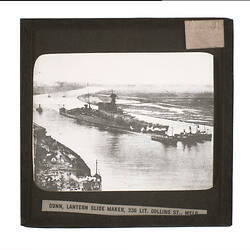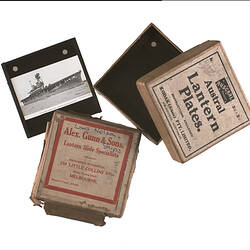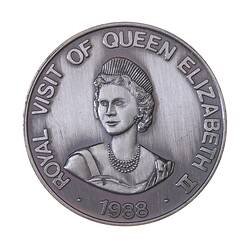Summary
Part of a collection of magic lantern slides relating to British naval history originating from the St John's Home for Boys. These slides were produced in Melbourne after the First World War with images from books and other sources. They are believed to have been used to illustrate lectures to the children in St John's Homes. Several of the slides are marked with the name 'Boreham'. This may indicate a link to Reverend Frank William Boreham (1871-1959), a noted Baptist writer and preacher who used lantern slides to illustrate talks in Melbourne and Tasmania however St John's was an Anglican institution.
Established as St John's Home for Boys in 1923, the home was located in Balwyn Road, Canterbury at 'Shrublands', a mansion formerly the property of investor & businessman John Hindson (1839-1919). His widow Alice Hindson (nee Henty) donated 'Shrublands' to the Anglican Church as a memorial to her husband and William, her late son, to be used as a home for "needy and destitute' boys on the condition it was named 'St John's'. It was officially opened on 22 November 1924 after extensive renovations to accomodate 30-40 boys, also paid for by Alice Hindson. There was a physical link with British naval history as Dame Nellie Melba donated a chapel lantern to St John's Home supposed to be one of those used by Admiral Lord Nelson in the cabin of his flagship HMS Victory. She also donated a cabin bell and wooden spars from HMS Victory. The latter were turned into candle holders.
Description of Content
A Royal Navy Queen Elizabeth class battleship being towed by four tugs along a river, circa 1918.
Physical Description
Standard format black and white Lantern Slide with black binding tape.
More Information
-
Collection Names
-
Collecting Areas
Home & Community, Public Life & Institutions, Childhood, Arms
-
Acquisition Information
Donation from Miss Appleby - St John's Homes for Boys & Girls, 16 Aug 1988
-
Manufacturer
Alexander Gunn & Sons, Melbourne, Greater Melbourne, Victoria, Australia, circa 1924
-
Organisation Depicted
-
Place & Date Used
St John's Homes for Boys and Girls, Melbourne, Victoria, Australia, 1924-1940
-
Format
Lantern Slide, Standard (3¼ in. x 3¼ in.), Black & White
-
Language
English
-
Inscriptions
Text: GUNN, LANTERN SLIDE MAKER, 235 LIT. COLLINS ST., MELB.
-
Classification
-
Category
-
Discipline
-
Type of item
-
Overall Dimensions
83 mm (Width), 82 mm (Height)
-
Keywords
Battleships, Children's Homes, Community Organisations & Services, Lantern Slides, Naval Vessels, Orphanages, Wars & Conflicts, Warships, World War I, 1914-1918



